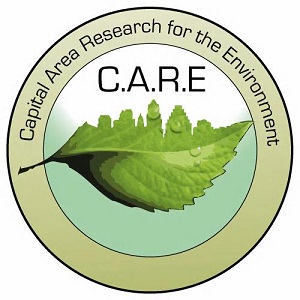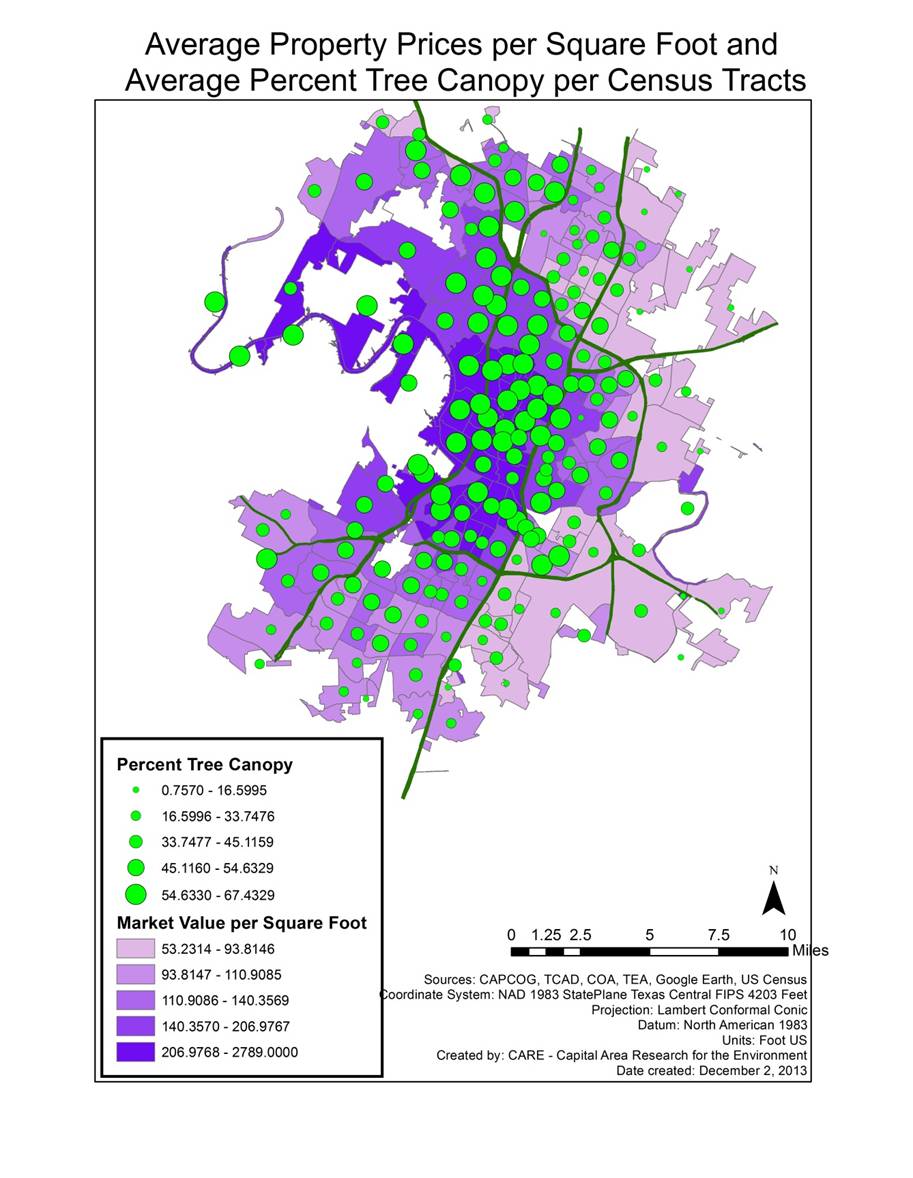

Project Overview
The main goal of CARE’s research was to determine the socio-economic benefits that tree canopy can provide. Using a 2010 tree canopy layer provided by the City of Austin, CARE will examined the relationship between urban tree shade and:
- Crime Rates- Lower crime rates translate not only to more contented citizens, but economic benefits as well. Incarceration costs, medical care for victims of assault, and policing are just a few of the costs borne of violent crimes (Shapiro & Hassett, 2012).
- Property Values- Higher property values equal higher property taxes for the city. Property taxes for the city of Austin are used to build roads, fund education, fund hospitals, and manage the criminal justice system (Toohey, 2012).
Methodology
Crime Rates
In order to determine the effect of tree cover on crime rates, we decided to use a geographically weighted regression (GWR). A GWR is a form of regression modeling that predicts the effect of an explanatory variable(s) on a dependent variable for each feature in the dataset.
Property Values
A GWR analysis was used again to determine the impact tree cover has upon property values. Explanatory variables analyzed are percent tree canopy, Texas Education Agency (TEA) school rankings, proximity to cultural attractions, and proximity to natural attractions.
Conclusion
Crime Rates
The geographically weighted regression predicted that an increase in tree cover will correspond with a decrease in crime across the entire city of Austin. Our analysis indicates that downtown and surrounding areas are more affected by the prevalence of tree canopy. It should be noted that because areas near downtown experience much higher crime rates than other areas, this trend was to be expected. Although the GWR predicted that tree canopy has a negative impact on crime rates across the board, the effect was not particularly significant.
Tree Canopy on Property Value
In this analysis, areas with the highest positive correlation to tree cover account for 23% of single family homes in Austin. Our results show that in all areas of Austin, an addition of tree canopy will benefit property values with north, central, and west areas most sensitive.

Project Scope : City of Austin